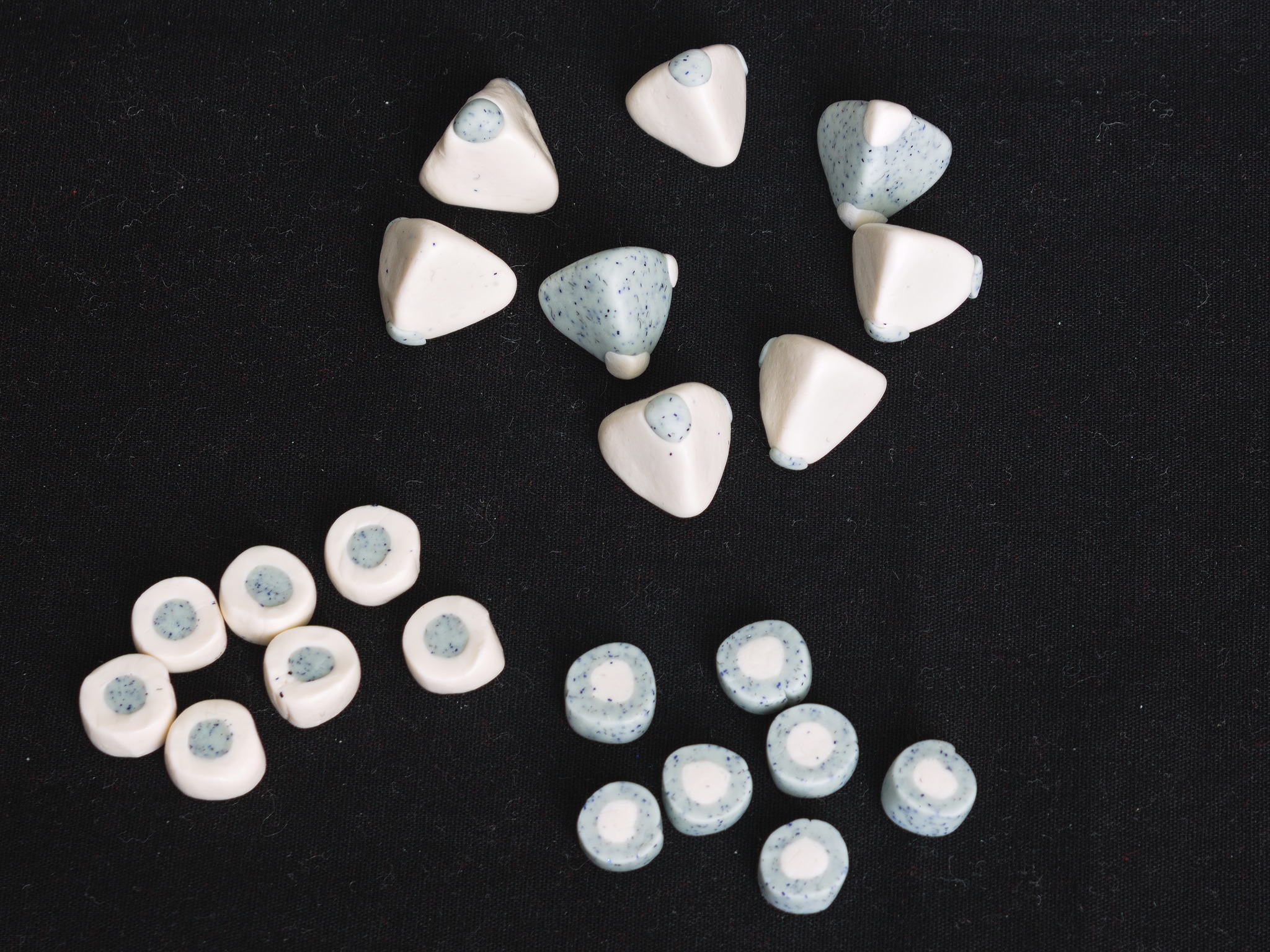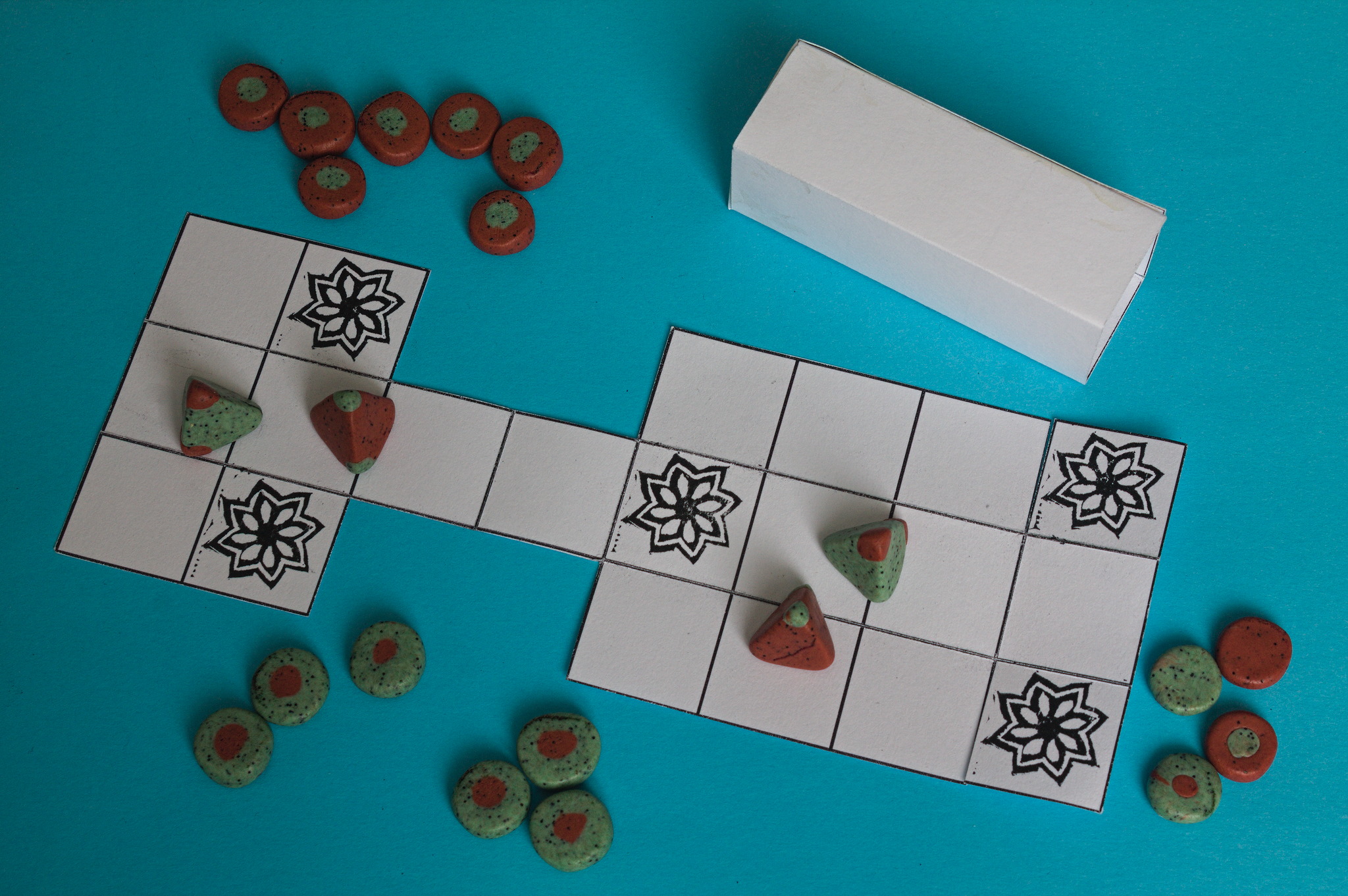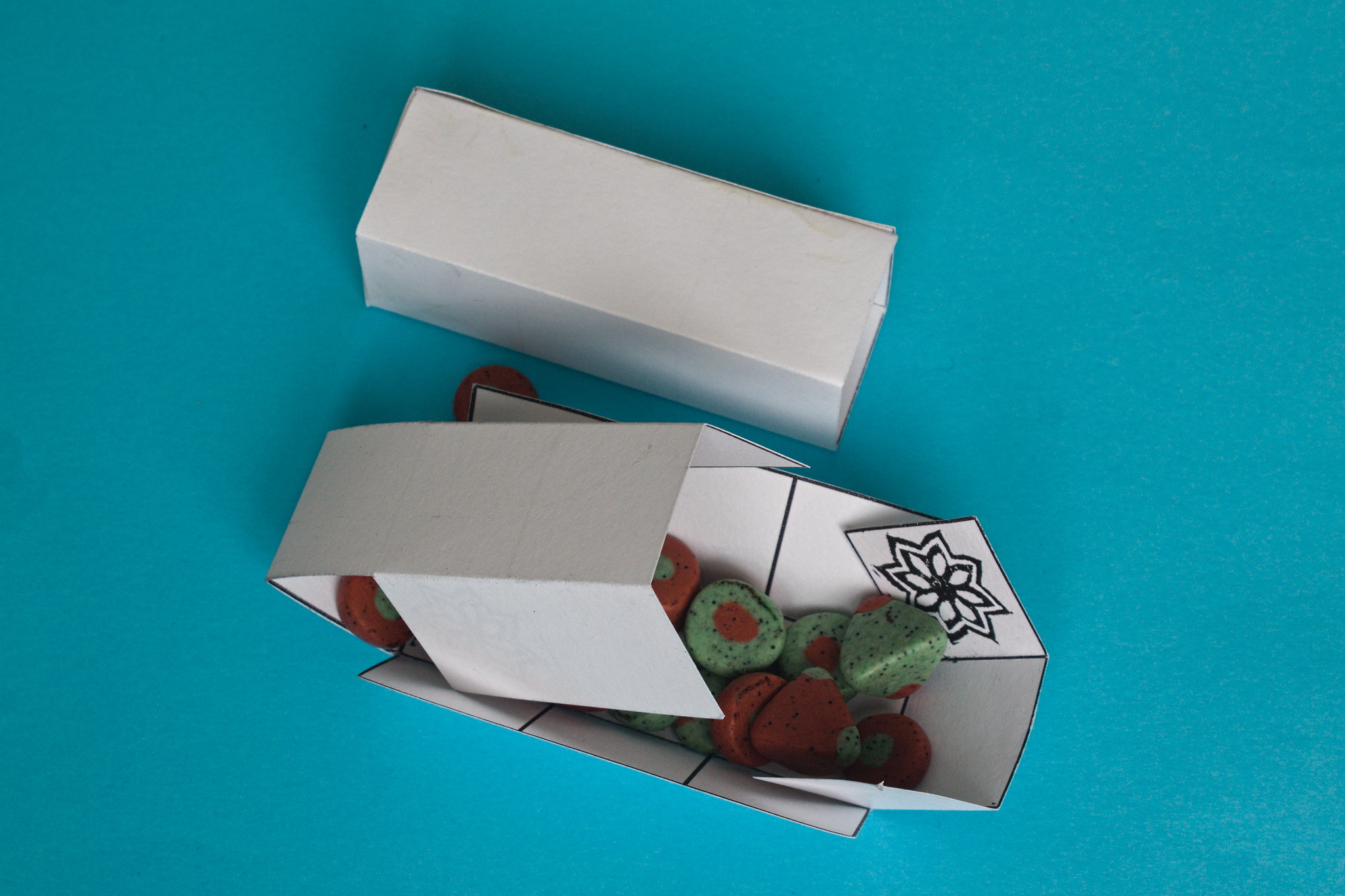Tags: madeof:atoms, polymer clay
Some months ago I stumbled on the video where Irving Finkel teaches Tom Scott how to play the Royal Game of Ur and my takeout was:
- Irving Finkel is Gandalf or something;
- the game sounded quite fun!;
so I did the almost sensible thing, quickly drew a board with inkscape, printed it on 160 g/m² paper and used my piecepack pieces to try a few games.
I say almost sensible, because rather than drawing the rosettes with inkscape I decided to carve a rubber stamp and use that to print them on the board (which is why the svgs on this page are missing them: if you print them you’ll have to add the rosettes in some way).
And if I had been a sensible person, that’s where I would have stopped, since that’s perfectly enough to play games and find out that it actually is quite a fun game, and one of our staples.
As some of you probably know, I’m not a sensible person.
I also have quite a few blocks and half-blocks of cernit, and one day after I’ve had used some, my hands were still moving and accidentally made some pyramidal dice, and a handful of tokens.

And after baking and trying them I liked them, but they had not been planned in any way, and they were a bit too small for the board, so the next time I was using cernit I tried to make a new set.
And while I was doing that I tried a new shape for the dice, as coins marked with a dot in the middle of one of the sides, because I don’t really like tetrahedral dice.

And now, I realized this wasn’t going to be my last set, and urgently felt the need for some container to keep them in and avoid missing pieces.
(Yes, in the picture above one piece was already missing. While taking it I didn’t realize it, and neither I did when picking up everything to put it away, getting the missing piece and storing it safely together with the rest of the set. It must have been hiding in plain sight nearby, but I will never know where.)
Anyway, back to Inkscape, and to a board printed on scrap paper that I tried to fold up until I came up with a layout that folded up in a small drawer, and then I added a case to wrap around it to keep it closed.


I played around with the case until it was big enough to actually slide around the folded board, and this is the result, ready to be printed out on A4 paper, cut, folded and glued. (This takes most of the sheet, and I’m not sure that the case would still fit around the board/drawer if printed with scaling, so if you want to print it on Letter paper I’d recommend to move the pieces around.)
Now, the only problem left was that green isn’t really my colour, and while I did like the stone effect of this set, I wasn’t exactly pleased by the colour scheme. (why did I do it this way in the first place? probably because I was trying to use up old cernit blocks before opening new ones.)
So, the only possible way out was to make yet another set, right?

I still used stone effect cernit, but this time in a red/grey scheme that knew I would have liked more, and while I was doing it I tried a few improvements on the randomization devices.
The tetrahedral dice are still the same: they work, it’s what they use in the replica sets, so I keep making them even if they’re not my first choice.
I’ve changed the coins to make them almost square for two reasons, however: one is that the round one tended to roll away into inconvenient places when throwing them with emphasis, and the other one is to make it easier to recognise them from the tokens with no need to flip each one around before starting the game.
The lozenges were a bit of a failure, instead. They work fine when thrown, but I don’t think that there is a self-evident way to decide which side should be counted, and the only intuitive way I can think of (count the ones in the player’s colour) would be unbalanced.
Speaking of balance issues: of course the hand-modelled dice and coins aren’t perfectly balanced but:
- they don’t feel obviously unbalanced;
- both players use the same set, so any subtle unbalance isn’t going to affect the chance of winning in an uneven way.
Maybe one day I will find a way to easily roll them a statistically significant number of times, collect data and analyze it to find out how imbalanced they are, but that’s not going to happen with manual data collecting, and I’m not really ready to go down the yak shaving filled road to automatize it.
To wrap up: is it going to be the last set I make for the Royal Game of Ur? lol. Is it going to be the last cernit set I make this month? definitely yes, I now have one I’m happy with, I’m routinely playing with it and I’m currently doing other crafts rather than cernit.